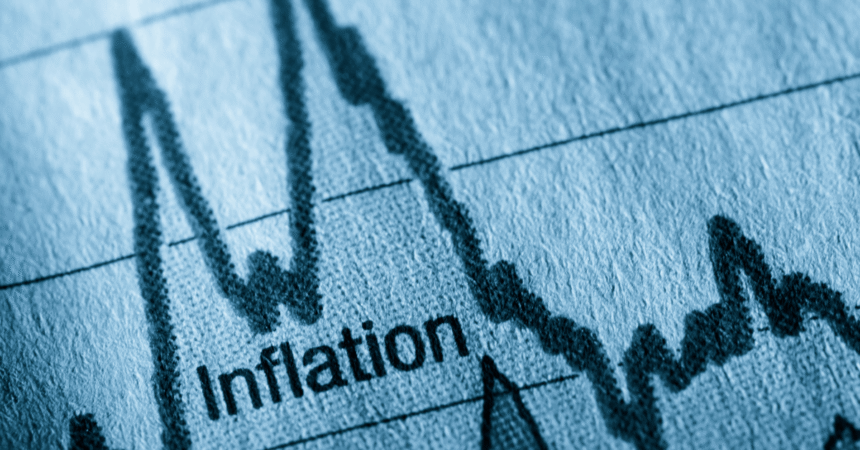In recent economic analyses, the Pakistani government has conveyed an optimistic outlook regarding inflation rates for the months of September and October 2024. With projections suggesting that inflation will remain within the range of 8-9%, this anticipated decline from August’s inflation rate of 9.6% signifies a potentially transformative period for the economy. This analysis will explore the various factors contributing to this projection, the implications for consumers and businesses, and broader economic trends in Pakistan.
Current Economic Landscape
The Monthly Economic Update & Outlook for September released by the finance division serves as a crucial document in understanding the current economic climate. The report emphasizes that the Consumer Price Index (CPI) inflation has receded to its lowest level in 34 months, indicating a substantial shift in economic stability.
Key Indicators of Economic Performance
- CPI Inflation Trends: The CPI is a critical measure of inflation, reflecting changes in the price level of a basket of consumer goods and services. The recent drop to 9.6% in August, and the expectation of further declines, signals a healthier economic environment. Lower inflation generally translates to increased purchasing power for consumers, which can stimulate economic activity.
- Large Scale Manufacturing (LSM): The report highlights the recovery of the LSM sector, an essential driver of economic growth. With major exporting sectors preparing to ramp up production, this recovery is expected to enhance job creation and contribute to the overall economic uplift.
- Stabilized Exchange Rate: A stable exchange rate is vital for fostering investor confidence. In recent months, the Pakistani rupee has shown resilience, which helps control inflation by reducing the cost of imports.
- Investor Confidence: The government’s commitment to implementing pro-business policies has begun to bear fruit, as evidenced by improved investor sentiment. An accommodating monetary policy and supportive regulatory framework can further enhance this climate, encouraging both local and foreign investments.
Government Strategies and Fiscal Policies
The government has outlined several key strategies to achieve these optimistic inflation targets and enhance overall economic stability:
- Fiscal Consolidation Efforts: The government’s commitment to fiscal discipline aims to improve public finances, thereby creating a more stable economic environment. By increasing revenue collection and controlling expenditures, the government can reduce budget deficits, which are often a driver of inflation.
- Monetary Policy Adjustments: An accommodative monetary policy is crucial for promoting investment and consumption. Lower interest rates can facilitate easier access to credit for businesses and consumers, stimulating demand and production.
- Green and Sustainable Finance Initiatives: The establishment of a Sustainable Finance Framework will allow the government to issue green and sustainability bonds in international markets. This approach not only attracts foreign investment but also aligns economic growth with environmental sustainability.
- Support for Agriculture: Agriculture remains a cornerstone of the Pakistani economy. The government’s focus on improving agricultural productivity through initiatives such as the Kharif 2024 production outlook underscores its importance. Favorable weather conditions and technological advancements are expected to enhance output and, in turn, stabilize food prices.
Implications for Consumers and Businesses
Benefits for Consumers
- Increased Purchasing Power: With inflation rates projected to decrease, consumers can expect their purchasing power to improve. This is particularly important for lower-income households that are disproportionately affected by rising prices.
- Stability in Food Prices: A stable inflation rate, particularly in food items, is crucial for ensuring that families can afford basic necessities. Given that food accounts for a significant portion of household expenditure, lower inflation could lead to improved food security.
- Investment in Savings: As inflation rates decline, consumers may feel more secure in their financial planning. Lower inflation can lead to higher savings rates, as people are less inclined to spend excessively due to fears of rising prices.
Opportunities for Businesses
- Enhanced Consumer Spending: With increased purchasing power, businesses can expect a rise in consumer spending, which is essential for driving economic growth. Retailers, in particular, stand to benefit from this trend.
- Investment Expansion: Businesses can take advantage of the favorable economic conditions to expand their operations. With lower interest rates and a stable currency, accessing capital for growth becomes more manageable.
- Export Growth: The anticipated recovery in the LSM sector is likely to lead to increased exports. Businesses in manufacturing and agriculture can explore new markets and expand their reach internationally, boosting foreign exchange earnings for Pakistan.
Challenges Ahead
While the outlook appears promising, several challenges remain:
- Global Economic Influences: The Pakistani economy is not insulated from global economic trends. Fluctuations in global oil prices, changes in trade policies, or geopolitical tensions can all impact inflation rates domestically.
- Supply Chain Disruptions: The ongoing challenges faced by global supply chains, exacerbated by events such as the COVID-19 pandemic, can affect the availability of goods and contribute to inflationary pressures.
- Dependency on Agriculture: While agriculture is a significant sector, it is often vulnerable to climate change and other environmental factors. A poor harvest due to unforeseen weather conditions could lead to spikes in food prices, counteracting the benefits of reduced inflation.
- Debt Servicing Costs: As the government focuses on fiscal consolidation, managing national debt will remain a challenge. High levels of debt servicing can limit the government’s ability to invest in critical sectors like education and healthcare.
The Path Forward
To navigate the complexities of the current economic landscape, the government of Pakistan must continue to implement strategic policies that prioritize stability and growth. This involves:
- Continuous Monitoring of Economic Indicators: Regular assessment of key economic indicators, such as inflation, unemployment, and GDP growth, will be crucial for making informed policy decisions.
- Engaging Stakeholders: Collaboration between the government, private sector, and civil society is essential for creating a conducive environment for growth. Engaging with stakeholders can lead to innovative solutions to address economic challenges.
- Promoting Technology and Innovation: Encouraging the adoption of technology in sectors such as agriculture and manufacturing can enhance productivity and competitiveness. Investments in research and development will also be vital for long-term sustainability.
- Strengthening Social Safety Nets: To protect vulnerable populations from economic shocks, the government should enhance social safety nets. This could involve expanding programs aimed at providing assistance to low-income families during times of economic distress.
- Diversifying the Economy: Reducing dependency on a single sector, particularly agriculture, by promoting diversification into other sectors like manufacturing, services, and technology can help stabilize the economy and create jobs.
The government’s expectation of inflation falling below 9% in September marks a hopeful juncture for Pakistan’s economic journey. While there are significant challenges ahead, the positive indicators and proactive policies implemented by the government present an opportunity for sustained economic growth. By focusing on stability, engaging stakeholders, and promoting innovation, Pakistan can navigate the complexities of its economic landscape, ensuring a brighter future for its citizens.
In the coming months, as inflation rates stabilize, it will be crucial for the government to maintain momentum through continued fiscal discipline and strategic investments. The vision of a robust, resilient economy is attainable, provided that collective efforts are made to address both existing challenges and future uncertainties.







